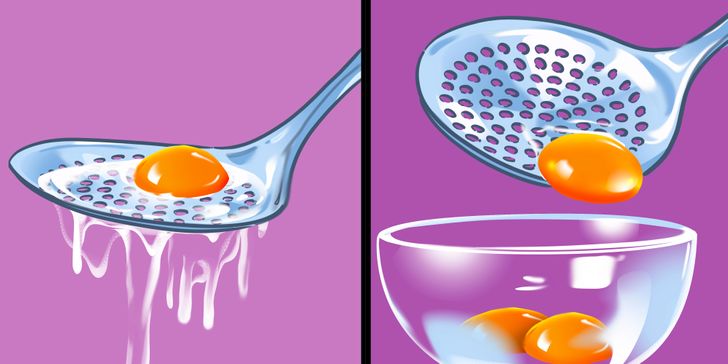Most insect-repelling plants do so with their natural fragrances, which keep annoying mosquitoes away and introduce wonderful scents throughout your garden.
If you don’t want to douse yourself or your garden in chemical bug sprays you can grow some of these plants to help keep mosquitoes away naturally. Plant these plants in areas where guests will be often such as by a seating area or a doorway.
1. Lemongrass
 The continent of Asia is a continent that is suitable for growing lemongrass. This plant can indeed thrive in tropical and sub-tropical climates. The characteristics are tall and similar to citronella grass plants. And lemongrass together with citronella grass is effective as an insect repellent.
The continent of Asia is a continent that is suitable for growing lemongrass. This plant can indeed thrive in tropical and sub-tropical climates. The characteristics are tall and similar to citronella grass plants. And lemongrass together with citronella grass is effective as an insect repellent.
The scent of lemongrass is hated by mosquitoes. In fact, if you take the oil from lemongrass is also effective in repelling insects. Therefore, if you don’t find an insect repellent product that contains lemongrass oil, you can replace it by planting this plant. All the nuisance insects will definitely go away.
2. Basil
 How much do you know about spice plants? Spice plants have benefits not only as food flavoring but some of them can also be processed into medicine. And basil leaves are included in the type of spices whose medicinal properties are no longer in doubt. In addition to being used as a food seasoning, you can use basil to repel insects.
How much do you know about spice plants? Spice plants have benefits not only as food flavoring but some of them can also be processed into medicine. And basil leaves are included in the type of spices whose medicinal properties are no longer in doubt. In addition to being used as a food seasoning, you can use basil to repel insects.
Planting basil is not difficult, you can just put the basil in a container and provide enough water and light. Place basil in corners of rooms, doors, and yards. Insects such as flies and mosquitoes are reluctant to enter your house.
3. Rosemary
 Rosemary is not only used as a cooking spice but also as an insect repellent. No need to use a spray that has a sharp smell and can make breathing difficult. Just use rosemary and the insects will run away!
Rosemary is not only used as a cooking spice but also as an insect repellent. No need to use a spray that has a sharp smell and can make breathing difficult. Just use rosemary and the insects will run away!
Rosemary can be planted in pots or in the yard. The aroma of rosemary can make the house safe from insect disturbances.
Even the scent is proven to last for a long time, so you don’t have to worry about the bugs coming back any time. If you want to make it into a spray, you can boil 1 liter of dry rosemary in 1 liter of water.
Boil for 20 to 30 minutes and strain the liquid into a container filled with cold water. Close tightly and store in the refrigerator. You can use this spray if needed.
4. Lavender
 Everyone must be familiar with the lavender plant. This plant has a beautiful color so it is used as an ornamental plant. This plant can beautify the appearance of the house both indoors and outdoors.
Everyone must be familiar with the lavender plant. This plant has a beautiful color so it is used as an ornamental plant. This plant can beautify the appearance of the house both indoors and outdoors.
This plant is known to still belong to the mint family and can be found in Europe, Africa, the Medditerranean, Southwest Asia, and India.
Not only pleasing to the eye, lavender can also make the room smell good. To human, lavender smells great, but not to insects. Why do you think so many insect sprays include lavender in their composition? The scent of lavender is hated by insects such as mosquitoes, moths, and flies.
5. Sage
 Have you ever heard of the sage plant? This plant is included in the category of spices and is often used as a food ingredient.
Have you ever heard of the sage plant? This plant is included in the category of spices and is often used as a food ingredient.
What many people might not know is that this plant is not only a delicious food but repelled insects.
Insects such as mosquitoes, flies, and bugs have a keen sense of smell where if they smell sage, they will fly away.
6. Marigolds
 The beauty of marigold flowers can be used to decorate homes and rooms. Beautiful in the eyes and delicious aroma complements the function of marigold flowers. But that’s not all the benefits that can be provided by marigolds. This flower is a natural remedy to repel annoying insects.
The beauty of marigold flowers can be used to decorate homes and rooms. Beautiful in the eyes and delicious aroma complements the function of marigold flowers. But that’s not all the benefits that can be provided by marigolds. This flower is a natural remedy to repel annoying insects.
There is a substance contained in marigolds called pyrethrum. This substance is effective in repelling insects. That’s why insect repellent products include marigold as an ingredient. Place this flower near doors and windows to prevent mosquitoes from entering your house.
7. Peppermint

Peppermint appeared quite often in a number of tea and candy products. And if we consume products that contain peppermint, our throat and nose will be relieved. Other than effective in soothing the throat and nose, peppermint is also effective at repelling insects.
Be it the plant or the oil, both are effective as insect repellents. If you don’t have more room to plant peppermint, you can buy a topical medication that contains peppermint. Peppermint is well distributed in Europe and the Middle East. Several countries are known to have cultivated peppermint plants for their benefits.
8. Catnip
 Cat lovers are certainly no stranger to catnip. Catnip is a plant that can provide a relaxing effect on cats if inhaled. Similar to the effects of marijuana on humans that can make humans high. Well, this plant is also effective at repelling insects.
Cat lovers are certainly no stranger to catnip. Catnip is a plant that can provide a relaxing effect on cats if inhaled. Similar to the effects of marijuana on humans that can make humans high. Well, this plant is also effective at repelling insects.
Catnip is easy to find because it can grow anywhere. One of the substances found in catnip is nepetalactone. Nepetalactone is loved by cats but hated by insects. So if you want your home to be safe from insect disturbances, you can try using catnip plants as a natural insect repellent.
9. Petunia
 There are many ornamental plants that can be found and all of them have different colors that can change the atmosphere of the house in an instant. Petunias can be an option for you to try.
There are many ornamental plants that can be found and all of them have different colors that can change the atmosphere of the house in an instant. Petunias can be an option for you to try.
The beautiful color of petunias is suitable to be placed in the house. Only having a height ranging from 16-30 cm, petunia flowers can not only make residents feel cool and comfortable but can also be free from insect disturbances. Make sure you can make the flowers bloom since the scent of petunias is a powerful insect repellent.
10. Pitcher Plant
 Pitcher plant, a unique plant that is included in the category of carnivorous plants. This plant differs from other plants in that it survives on sunlight, water, and carbon dioxide for photosynthesis. Carnivorous plants survive by eating animals trapped in them.
Pitcher plant, a unique plant that is included in the category of carnivorous plants. This plant differs from other plants in that it survives on sunlight, water, and carbon dioxide for photosynthesis. Carnivorous plants survive by eating animals trapped in them.
The pitcher plant is a carnivorous plant that has a trumpet-like shape. On the surface and the walls are very slippery, making it difficult for any animal that enters it to get out. This plant can trap insects and even mice. These nuisance animals lure insects with their scent and color. Once an insect or other animal enters, the animal will slip and fall into a trap that contains a liquid used to process food.








